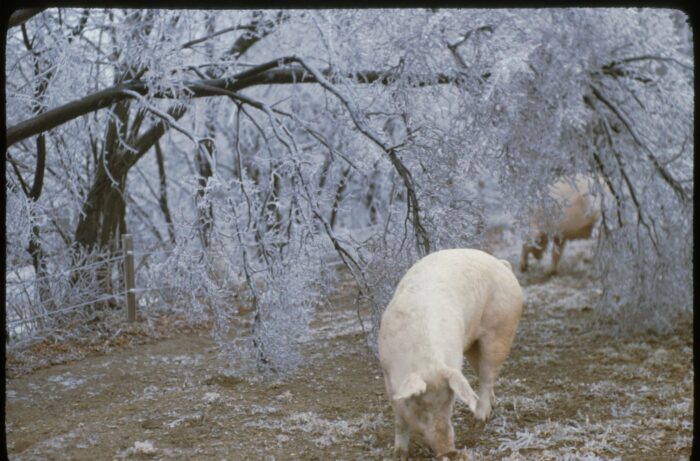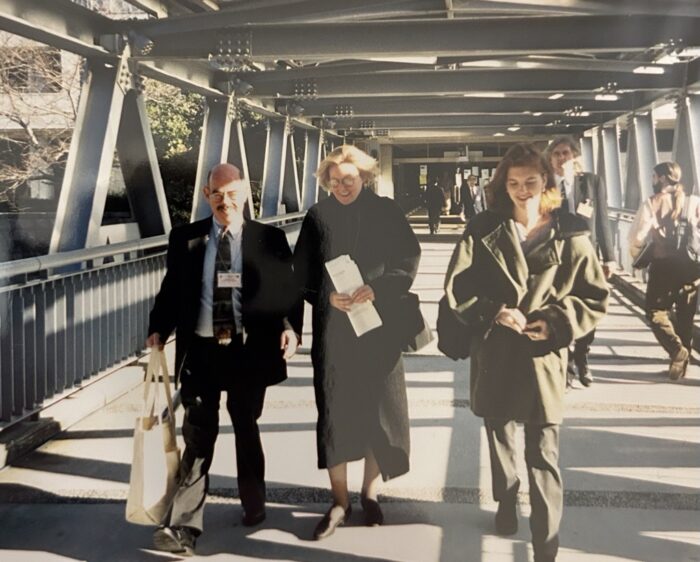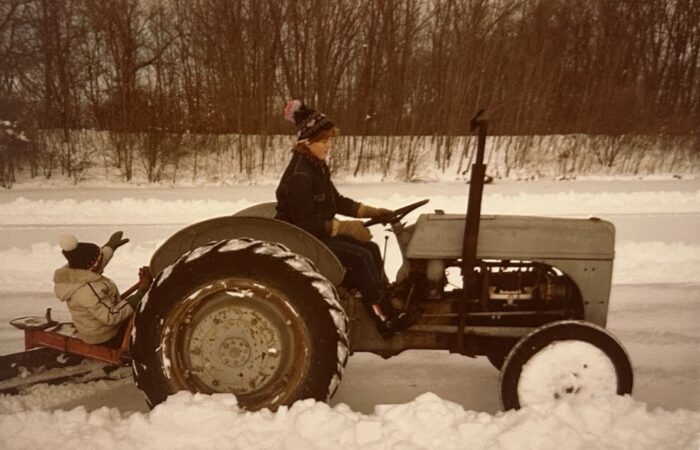On common ground and climate progress
The South plays an outsized role in contributing to climate change and is already seeing severe consequences. We know we can’t tackle the defining environmental challenge of our time without starting in our region.
That’s why SELC is thrilled to have our new Climate Initiative Leader Alys Campaigne joining the organization at this pivotal moment for us and the planet.
Campaigne, who has a long history of identifying and honing opportunities to drive climate solutions, will serve as SELC’s principal spokesperson on climate change and climate policy.

Read the interview below for reflections into how Campaigne’s Southern roots fuel her passion for making climate progress for all, and how SELC is prepared to help implement our nation’s most historic climate legislation yet.
How did growing up on a small farm shape your interest in environmental conservation?
As a child I took for granted something that I now see as really special. That sentiment is captured well by Wendell Berry, a writer my parents introduced me to early on. Growing up on a farm let me deeply engage with the natural world from a young age, interacting with people who didn’t think of themselves as environmentalists but were the stewards and minders of the landscape. The farm was near a polluting landfill that later became a Superfund site. I remember being shocked that these things were allowed to happen. We were close enough to Three Mile Island that we were mapping the evacuation routes. I was inspired to identify and fix some of these threats by organizing and connecting people, like the neighbors and the farmers I would encounter at the feed store, to possible solutions.
Why is the South uniquely positioned to tackle climate change and environmental justice issues? What are you most excited about?
I grew up riding the school bus across the Mason-Dixon line every day and was fascinated by the geography of the North-South divide. The physical line that was the demarcation of freedom or slavery, was at once symbolic, arbitrary, and profound. Deep scars from the Civil War remain in the South in the form of persistent, structural racial and economic inequities. But there is also a legacy of resistance, movement building, innovation, beauty, and large swaths of protected land and forests. We have an opportunity, and obligation, to use these skills to build and implement inclusive climate solutions.


I’m particularly drawn to the rural and working landscape because of how I grew up, and I’ve always thought we should engage and communicate in a more connective way to find solutions that work for all of us. I enjoy the challenge of bridging cultural divides, and we need an all-hands-on-deck spirit to succeed. I also love to remind those who don’t live in the South that, while we have a unique set of barriers to equitable change here, there’s a lot of really exciting and inspiring change-making happening on the ground.
At SELC we have the ability to engage locally while keeping the cumulative impacts in sight.
Doing this job at a regional level feels like the perfect scale. Every choice — be it approval of a new development, power plant, or logging agreement — has the potential to help or hinder climate progress. At SELC we have the ability to engage locally while keeping the cumulative impacts in sight. Regional climate impacts can be visualized more accessibly, and effective adaptation and migration strategies for natural and human communities operate at that scale.
Why is Charleston a great place for SELC to lead its climate work?
We’re ground zero in terms of vulnerability and exposure if we don’t get it right, and we’re already seeing the effects of worsened flooding from extreme weather and sea level rise firsthand. We have tremendous coastal assets like undisturbed acres of wetlands and marsh, and the potential — if not always the will — to innovate ways we can live with water.
What do you like most about where you live in Mount Pleasant, South Carolina?

I love where I live. I can bike to work in downtown Charleston. I’m 30 minutes from 250,000 acres of forest land that is adjacent to the Cape Romain National Wildlife Refuge, which offers some of the best wildlife habitat in the entire contiguous coastal United States. It’s amazing. It inspires me every year as a powerful nursery for turtles, migrating shorebirds, and other wildlife. The smells and sounds of the popping plough mud bring me a sense of timelessness and awe of nature’s power to hold and release vast amounts of water with each changing tide.
Mount Pleasant has grown tremendously, as has much of our region, but we live in old Mount Pleasant, and I love that I can walk under ancient oaks to restaurants or the gym, and bike to downtown or the beach. I really enjoy the connectivity that the older neighborhood design enabled, and I feel very grateful for it because a lot more people are forced to sit in traffic in much of the rest of area due to the dominance of car-centered development patterns.
What can we expect from SELC’s new Climate Initiative?
Climate change is the challenge of our time, and we at SELC have the skills to deliver results. We are already working throughout our region to demonstrate what it looks like to decarbonize our energy and transportation systems, and make way for renewables and efficiency improvements to lower people’s utility bills and minimize the climate risk. Recognizing that there are already some climate impacts we’re locked into, we’re also working with partners throughout the region to help communities and the landscape adapt to a new reality.


We’re not just working on the technological fix, we’re also identifying and implementing land use planning and management practices to store water and carbon, and protect our land, wildlife, and our communities. It has to be a top-down and a bottom-up approach.
We are also helping unleash the ability of individuals and communities to roll up their sleeves to help define what works best and be part of the solution — because pretty much everything touches climate — the way we grow our food, where we live, how we get around — all of it.
Investments in things like energy, roads, and developments lock in decades of climate consequences, and right now we have the opportunity of a lifetime to leverage leadership and momentum at the federal level.
It can either be overwhelming or empowering. Having climate touch all those places means there’s somewhere for everyone to jump on board and make the change that we need. We’re acting fast and with urgency while making space for local innovation.
How will SELC help implement directives from the Inflation Reduction Act, the most ambitious climate legislation ever passed in our country’s history?
Investments in things like energy, roads, and developments lock in decades of climate consequences, and right now we have the opportunity of a lifetime to leverage leadership and momentum at the federal level. The biggest manifestations of that are the IIJA and the IRA — the Infrastructure Investment and Jobs Act and the Inflation Reduction Act.
SELC is well equipped to make sure this generational investment is put to good use in our states. We know the forums where decisions are made. We have the trust of decision makers and other stakeholders. We have the technical understanding of what is happening in our states and we’re dedicated to the task of getting the best outcome possible. Our goal is to make sure those dollars are put to work on the ground in inclusive and transformational ways that demonstrate the power of public investments in climate solutions.
What do you like to do when you’re not at work?

I love to hike, bike and go critter-spotting. I love music in almost all forms, so you’ll catch me regularly at local concerts, or I’ll travel to a good show now and again.
Favorite Southern food?
Toss up between boiled peanuts or any kind of good steamed Southern greens.
Women have long been on the forefront of working to address the causes and consequences of climate change. What advice do you have for them?
Don’t be afraid to use your voice. There are so many ways you can make an impact, so find what feels right and lead from that. Women have a long-storied tradition of leading very effective movements and we need that now more than ever. Women have faced and still face a lot of challenges. We’re persistent and we’re not going away. So who better to be on the frontlines for climate and environmental justice?
And with some of the big climate decisions we’re making, we may not see the fruits of them in our lifetime. Women are often knee-deep in thinking about, and tending, across generations. The ability to think and tend to multigenerational interests and needs is the kind of long-range investment, thinking, and passion that a challenge like climate change requires.
